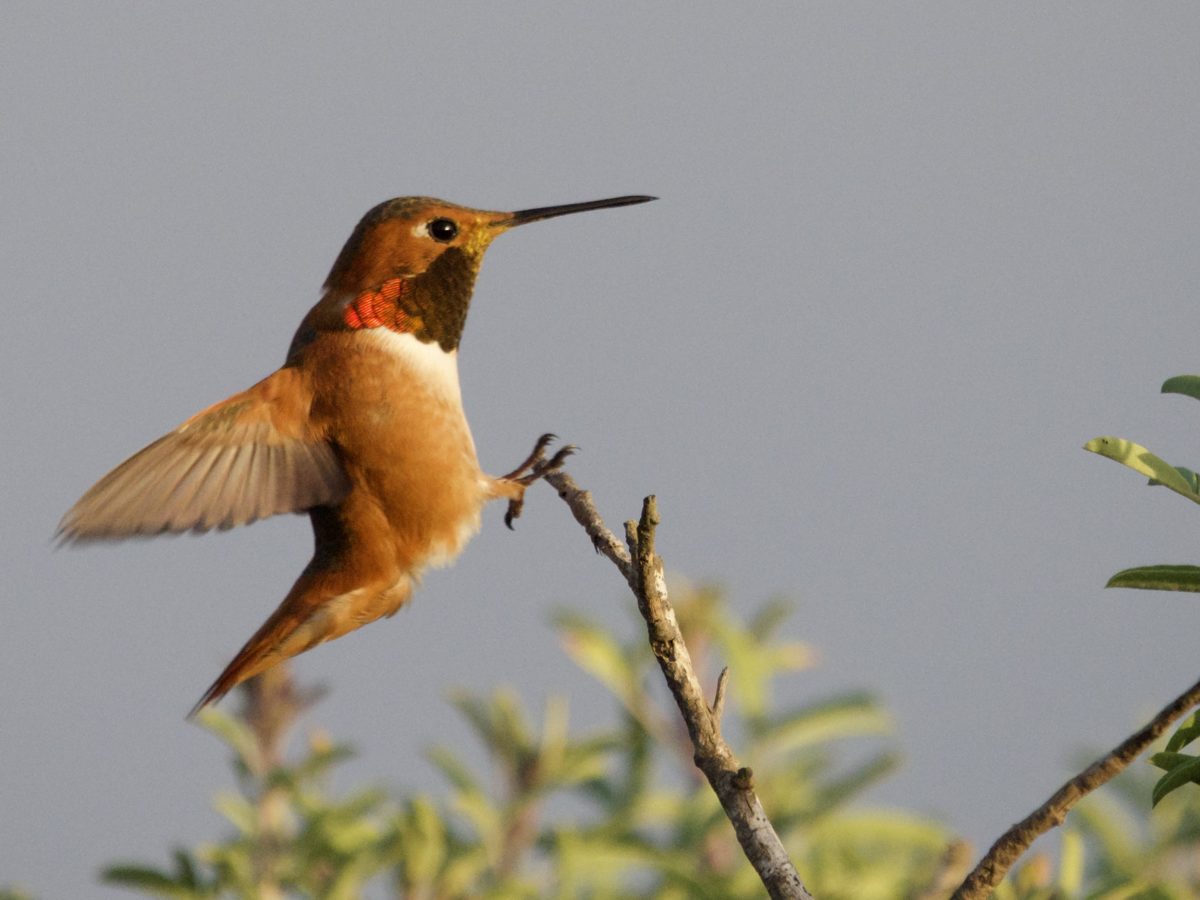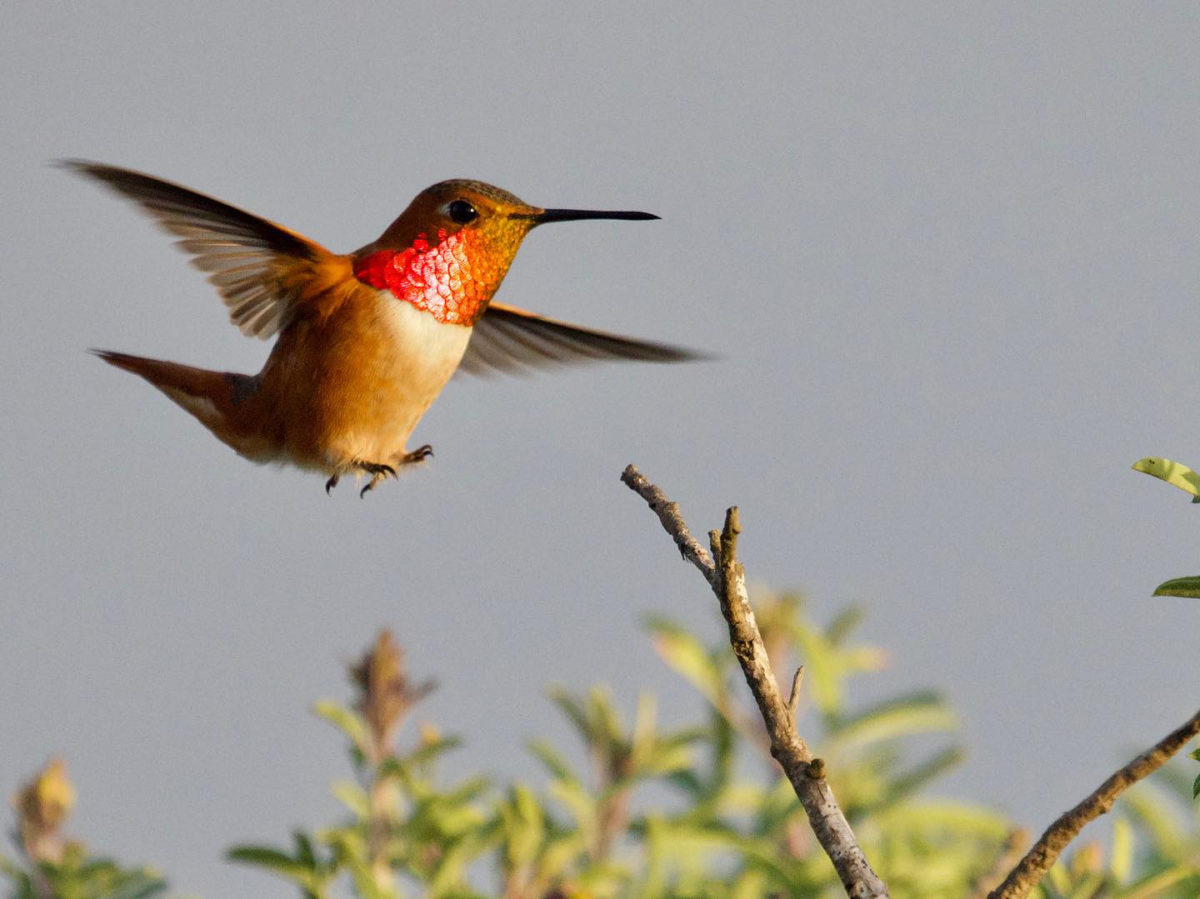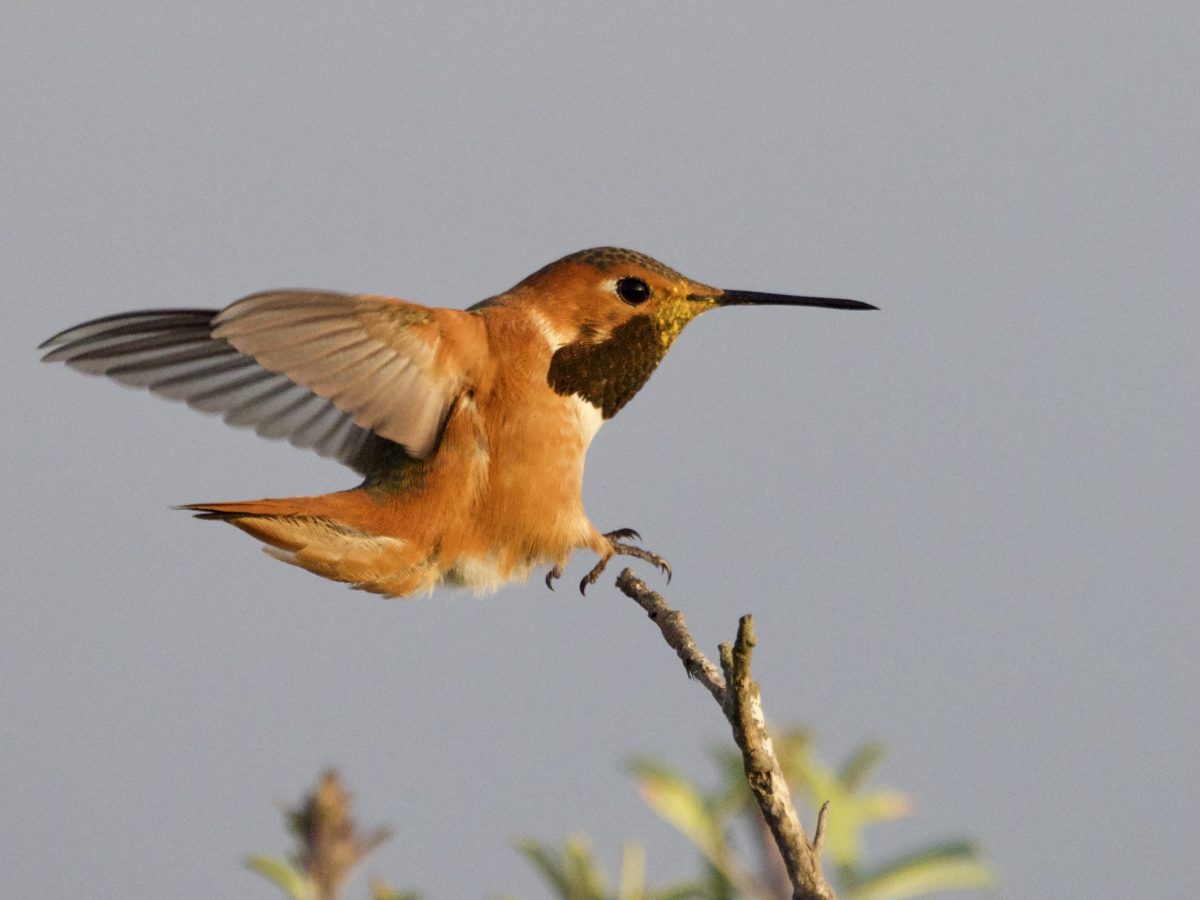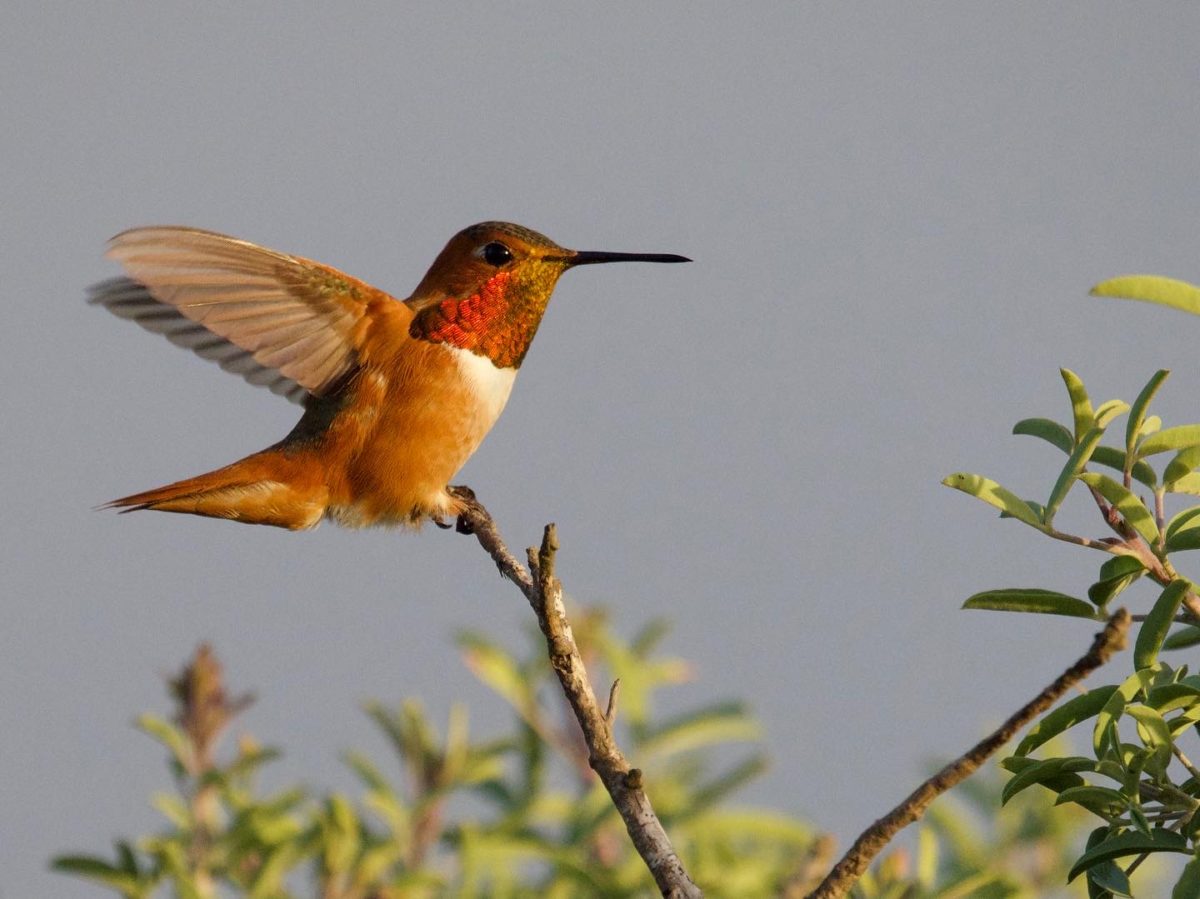This Allen’s Hummingbird had a favorite perch along a Bolsa Chica trail. I suspect he might be one of the most photographed hummingbirds in Southern California, given his predictable stance on a favorite shrub, within telephoto lens of the trail.
The number of Allen’s I saw during my stay in the area was astounding. It seemed like one bird per shrub in some locations. I shot these on an evening when the contrast of storm clouds and sun piercing through created a natural bounce of light against this beautiful bird. The gorget will change color depending on the quality of light, varying from an amber-bronze to claret to a muted chocolate hue.
In the Bay Area, I love the springtime arrival of Allen’s Hummingbirds, flitting in to tussle over perches and monkeyflowers with the resident Anna’s. Differentiating Allen’s Hummingbirds from Rufous can be a challenge for me, and it’s quite possible I’ve misidentified my share. The ID ultimately comes down to minute features not easily seen: tail feathers and notches.
Here’s a great primer on how to tell the two apart, with a diagram showing the distinctive tail feathers of an adult Rufous:
Be sure to read the full post by Sheri L. Williamson. One quick excerpt:
The only safe, accurate way to distinguish between Rufous and Allen’s in any and every plumage is by the shapes of the tail feathers. You can see these when the birds fan their tails in combat or preen them. In Allen’s, all of the tail feathers are narrower than in Rufous, most noticeably the outer three. In Rufous, R2 has that distinctive notched tip in adult males, expressed as a “pinched” tip in most (but not all) adult females and juvenile males.





Leave A Comment